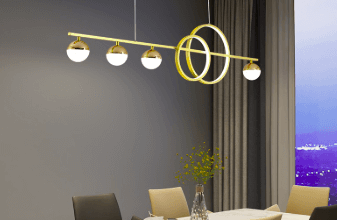
When it comes to designing a children’s room that grows with them, there are a multitude of considerations that parents and designers alike must take into account. The key to a successful design lies in creating a space that is not only functional and adaptable but also aesthetically pleasing and conducive to the child’s evolving needs. In this comprehensive guide, we will explore the essential features of a functional children’s room designed for growing up, optimal strategies for making the most of the space, and how to blend different styles organically. This discussion will be particularly valuable for those seeking inspiration in the context of Interior Design in London.
Understanding the Needs of a Growing Child
As children grow, their needs and preferences evolve, often rapidly. A room that was perfect for a toddler can become inadequate for a school-aged child or a teenager. Therefore, a fundamental aspect of designing a functional children’s room for growing up is to anticipate these changes and create a space that can adapt over time.
Interior Design in London often involves working with limited space, making it crucial to optimize every square inch. This can be achieved through smart storage solutions, flexible furniture, and a layout that allows for easy reconfiguration. For example, a crib can be replaced with a bed that has built-in storage, and a play area can be converted into a study nook as the child matures.
Key Features of a Functional Children’s Room
- Adaptable Furniture: One of the most important elements in a child’s room is the furniture. To ensure the room can grow with the child, choose furniture that is adaptable and multifunctional. For instance, a convertible crib that transforms into a toddler bed and later into a full-sized bed can save parents from the need to purchase new furniture as the child grows. Additionally, desks with adjustable heights and modular storage units can be reconfigured as the child’s needs change.
- Smart Storage Solutions: Interior Design in London often emphasizes the importance of efficient storage, especially in smaller homes. In a child’s room, storage should be accessible yet out of the way. Consider built-in wardrobes, under-bed storage, and wall-mounted shelves that keep the floor space clear for play and movement. Storage bins that fit under the bed or in closets are also excellent for keeping toys, books, and clothing organized.
- Flexible Layout: A flexible room layout is crucial for adapting to a child’s changing activities and interests. As they grow older, the room should be able to accommodate different zones—such as a sleeping area, study corner, and play or relaxation space. Movable furniture, such as rolling desks or beds on casters, allows the room to be reconfigured easily.
- Lighting: Lighting is an essential aspect of any room, but in a child’s room, it must be both functional and comforting. Consider installing dimmable lights that can transition from bright task lighting for homework to a softer ambiance for bedtime. Additionally, ensure that natural light is maximized with sheer curtains that allow daylight to filter through while maintaining privacy. For those focusing on Interior Design in London, incorporating lighting that combats the often gloomy weather can significantly enhance the room’s atmosphere.
- Color Palette: The color palette of a child’s room should be versatile enough to age with them. While bright, playful colors are appealing for younger children, they may not be as suitable as they grow older. A neutral base with pops of color that can be changed through accessories, such as cushions, rugs, and wall art, allows for easy updates. This approach is particularly effective in Interior Design in London, where timeless elegance is often blended with contemporary touches.
Optimal Strategies for Room Design
Designing a room that will grow with your child requires careful planning and an understanding of how their needs will change over time. Here are some strategies to consider:
- Start with a Neutral Base: A neutral color scheme provides a versatile backdrop that can be easily updated as your child grows. Neutral tones are timeless and can accommodate a wide range of decorative styles and color accents, making it easy to refresh the room without a complete overhaul.
- Invest in Quality Furniture: High-quality, durable furniture is a worthwhile investment. Pieces that are well-made and designed to last can be used for many years, saving money in the long run. Look for furniture that is not only sturdy but also versatile, so it can adapt to different uses as your child grows.
- Plan for Flexibility: Consider how the room can be reconfigured as your child’s needs change. A room that is designed with flexibility in mind can evolve with the child, accommodating different activities such as studying, playing, and relaxing. Furniture on wheels, modular units, and multi-purpose items can all contribute to a more flexible space.
- Incorporate Personalized Elements: While the room should be functional and adaptable, it should also reflect the personality and interests of the child. Personal touches, such as artwork, photographs, and favorite colors, can make the space feel more special and meaningful to the child. As their tastes change, these elements can be easily updated.
- Consider Safety: Safety is a paramount concern in any child’s room. Ensure that furniture is securely anchored, electrical outlets are covered, and sharp corners are minimized. Additionally, avoid furniture that could tip over easily and opt for materials that are non-toxic and easy to clean.
Style Integration and Organic Blending
When it comes to blending styles in a child’s room, the goal is to create a cohesive look that is both stylish and functional. Interior Design in London often draws inspiration from a variety of styles, including modern, Scandinavian, and traditional, all of which can be integrated into a child’s room.
- Scandinavian Style: The Scandinavian style is known for its simplicity, functionality, and emphasis on natural light—elements that are perfect for a child’s room. This style often features a neutral color palette with natural wood accents, creating a calm and serene environment. Incorporating Scandinavian design elements, such as minimalist furniture and cozy textiles, can make the room feel both modern and timeless.
- Modern Style: A modern style can bring a fresh, clean look to a child’s room. With an emphasis on sleek lines, functional furniture, and minimal clutter, a modern design is ideal for creating a space that is both practical and visually appealing. Interior Design in London often incorporates modern elements, such as bold geometric patterns and innovative storage solutions, to maximize space and functionality.
- Traditional Style: For those who prefer a more classic look, traditional design elements can be seamlessly incorporated into a child’s room. Think of elegant furniture with detailed craftsmanship, rich fabrics, and a warm color palette. Traditional elements can add a sense of coziness and timelessness to the room, making it feel welcoming and comfortable.
- Eclectic Mix: Blending different styles can result in a unique and personalized space. An eclectic approach allows for the incorporation of various design elements, such as a modern bed with traditional bedding or a Scandinavian-inspired desk with colorful, playful accessories. This approach works well in Interior Design in London, where diverse cultural influences often come together to create dynamic and vibrant interiors.
Practical Tips for Blending Styles
- Balance is Key: When blending styles, it’s important to strike a balance so that the room doesn’t feel chaotic or mismatched. Choose a dominant style and incorporate elements from other styles in a way that complements rather than competes. For instance, if Scandinavian is the dominant style, traditional elements like an antique chair or a patterned rug can add warmth and character without overwhelming the space.
- Color Coordination: Use a consistent color palette to tie different styles together. Even if the furniture and accessories are from different design styles, a cohesive color scheme can create a harmonious look. This is particularly important in Interior Design in London, where the use of color can significantly influence the mood and feel of a room.
- Layer Textures: Textures can add depth and interest to a room, especially when blending styles. For example, a modern room with sleek furniture can be softened with plush rugs, cozy throws, and textured cushions. Conversely, a traditional room can be updated with smooth, modern surfaces like glass or metal accents.
- Personalization: Incorporate elements that reflect the child’s personality and interests. This could be through artwork, bedding, or decorative accessories that resonate with the child’s tastes. Personalization not only makes the room more enjoyable for the child but also ensures that it feels like their own space.
Designing a functional children’s room for growing up requires careful consideration of both the current and future needs of the child. By incorporating adaptable furniture, smart storage solutions, and a flexible layout, you can create a space that evolves with the child. Additionally, blending different styles organically can result in a room that is not only practical but also stylish and reflective of the child’s personality.
For those involved in Interior Design in London, these principles are particularly relevant. The city’s diverse architecture and design influences provide a rich tapestry of ideas to draw from. Whether you are designing a room in a modern apartment, a Victorian townhouse, or a contemporary new build, the key is to create a space that is functional, flexible, and aesthetically pleasing.
Incorporating these strategies will ensure that the room is not only a place where the child sleeps and studies but also a space where they can grow, explore, and express themselves. As they transition from childhood to adolescence, the room will adapt with them, providing a consistent and comforting environment through the years. Interior Design in London offers a unique opportunity to blend functionality with style, creating rooms that are as dynamic and vibrant as the children who inhabit them.




